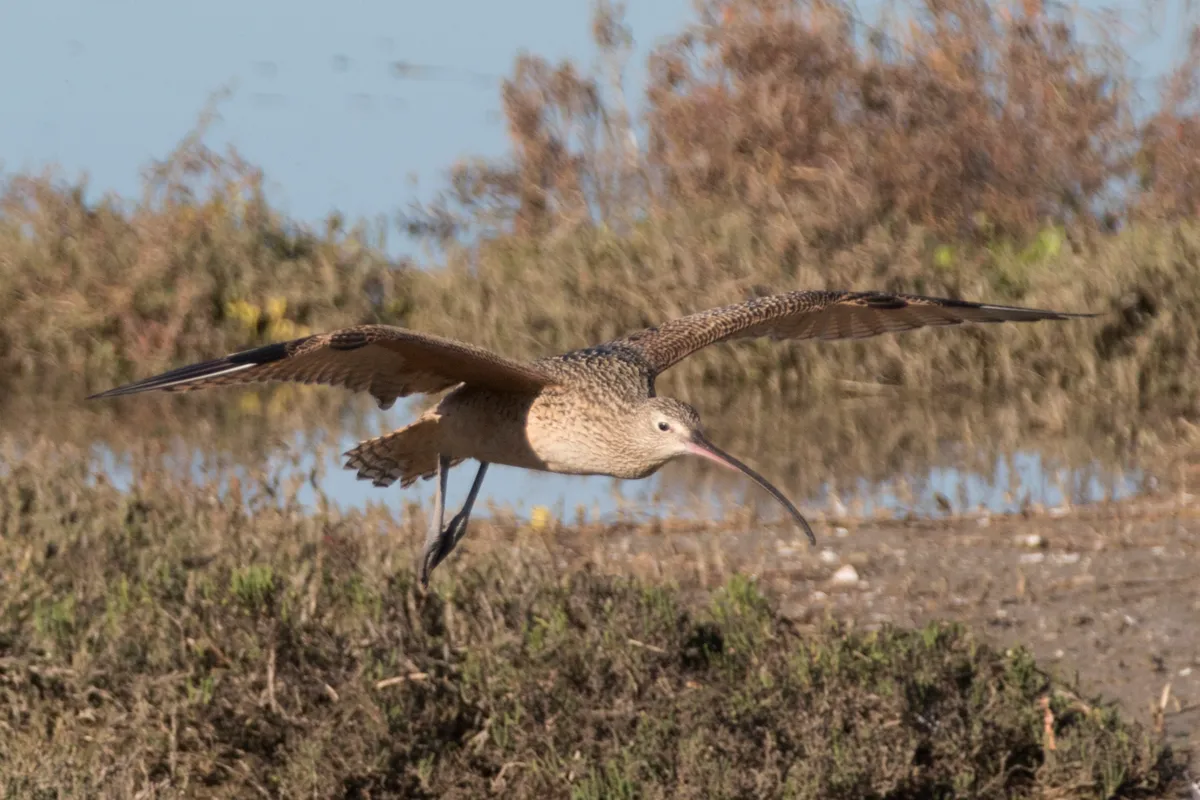1
Where does the curlew get its name from?
The genus name Numenius refers to the curlew's bill. Numenius comes from two Greek words, 'neos' meaning new and 'mene' for moon. This creates 'of the new moon', alluding to the crescent-shaped of the bill.
The Eurasian curlew's species names also refers to the shape of its bill, as arquata is the Latin word for the archery bow.
2
How many species of curlew are there?
There are eight species of curlew, two of which could possibly be extinct - the Eskimo curlew (N.borealis) and slender-billed curlew (N.tenuirostris).
Of the remaining six species:
- the far eastern curlew (N.madagascariensis) is listed as Endangered - numbers in Australia have dropped by 80 per cent in the past 30 years
- the bristle-thighed curlew (N.tahiteiensis) is listed as Vulnerable - there are only around 7000 individuals left
- the Eurasian curlew (N.arquata) is listed as Near Threatened - this is the same category as jaguars!

3
Why is the Eskimo curlew thought to be extinct?
The Eskimo curlew (N.borealis), also known as the northern curlew, prairie pigeon or doe-bird, was once one of the most numerous shorebirds in North America. It has not been sighted since the 1980s, and is thought to be possibly extinct.
At one point, two million were killed each year by hunters.
4
How does the curlew use its bill to find food?
The end of a curlew’s bill is sensitive and acts independently, acting like tweezers which enables it to feel around in the mud for prey.
The bill has a lot of strengthening structures inside it to prevent it from breaking. However, this does mean that it can’t put its tongue down the bill to help grab and swallow.
To compensate for this, curlews are very adept at throwing their prey up in the air before catching and eating it.

5
Why did people used to eat curlew?
Eurasian curlews (N.arquata) used to be eaten, and appeared in several recipe books. They were once served to King James I in a feast, and were so common in Cornwall they were served in pies.
In fact, up until 1942, you could still buy curlews in UK butchers.

6
Which species of curlew can be found in the UK?
Two species of curlew can be found in the UK - Eurasian curlew (N.arquata) and whimbrel (N.phaeopus). Although occasionally a Hudsonian whimbrel (N.p.hudsonicus), a subspecies of the whimbrel, does turn up.
How to tell the difference between curlews and whimbrels
Both birds are large, brown waders with long, downcurved bills. Distinguishing them can be tricky, but if you've got a good view and know what you're looking for, it shouldn't be too hard.
The UK has up to a third of the world breeding population of Eurasian curlews.

7
How to identify male and female curlews
It is almost impossible to tell between male and female Eurasian curlews, because they look identical. The only way to tell them apart is to check the bill length, as female curlews have a slightly longer bill.
However, even this can lead to inaccuracies, as the lengths can still vary. It is generally possible to tell between the male and female in a mating pair though.
8
Are curlew sandpipers and stone curlews actually curlews?
Although they have the word curlew in their English names, curlew sandpipers (Calidris ferruginea) and stone curlews (Burhinus oedicnemus) are not actually curlews!
Main image: The Eurasian curlew is listed as Near Threatened on the IUCN Red List. © Arterra/UIG/Getty
Mary Colwell walked 500 miles in spring 2016 to find out why the Eurasian curlew is disappearing.

